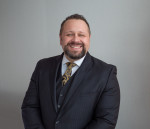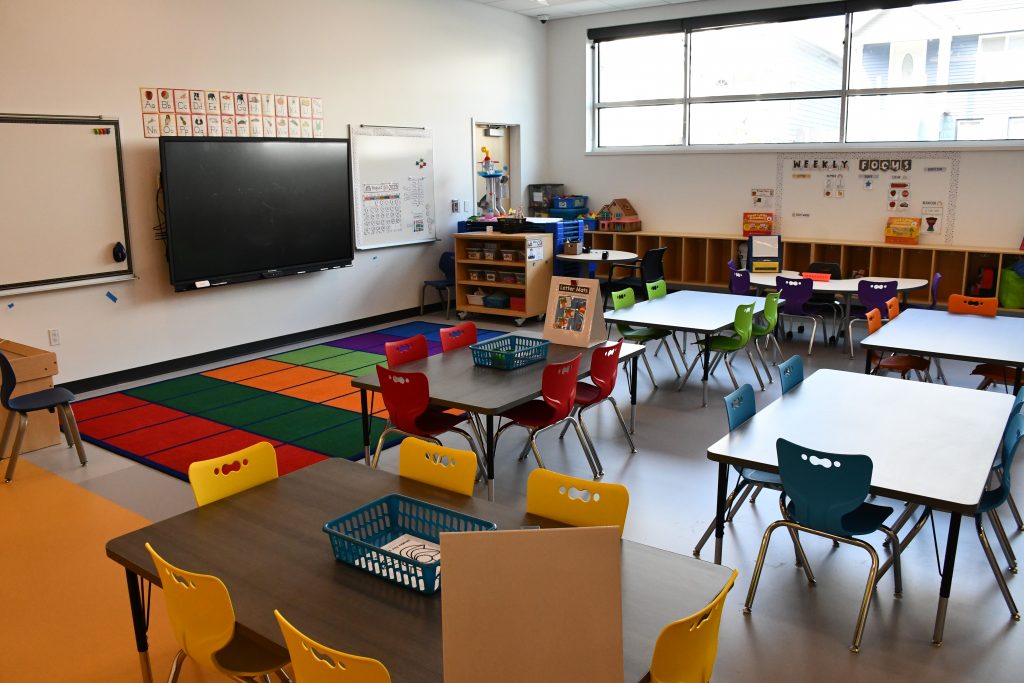The Truth About School Choice
A response from School Choice Wisconsin to earlier op-ed about effectiveness of choice schools.
We are publishing this op-ed in response to a Sept. 5 op-ed.
Wisconsin Examiner editor Ruth Conniff‘s Sept. 5 column, “How School Choice Backers Skew The Statistics,” is riddled with errors.
Despite the headline, Conniff cites not a single “skewed” statistic in a recent School Choice Wisconsin report on the cost-effectiveness of public schools and schools in Wisconsin’s school choice programs. A likely explanation for her omission is that the SCW accurately cites statistics published by the Wisconsin Department of Public Instruction (DPI).
DPI data show that taxpayer support for choice students in 2021-22 was 61% of public school revenue. (When private philanthropy is estimated, private choice students are financed at 70% of public schools.) Despite that gap in resources, DPI Report Cards rank most private choice schools higher than public schools. DPI also reports higher scores among choice students on the college-readiness ACT test. So, according to DPI, choice schools get less money but show better results. On that basis, the SCW report judged them to be more cost-effective.
To counter those data-based findings, Conniff offers demonstrably erroneous claims. She quotes Michigan State professor Joshua Cowen to buttress her errors.
Space limitations don’t allow for a full review of Conniff’s and Cowen’s inaccuracies. Here are half a dozen of them.
- Conniff: “[T]he school voucher experiment has failed to produce better outcomes in reading and math than regular public schools.”
False, as demonstrated by DPI data cited in the report. Choice students in Racine and Milwaukee score higher in reading and math than public school students in those cities. Choice students in the statewide program, where eligibility is limited to low-income families, score much higher than low-income public school students and about the same as students from all income levels.
- Conniff: “Wisconsin voucher schools have a long record of expelling and counseling out expensive-to-educate students.”
False. Conniff offers not a single instance of this happening, Instead, she cites a decade-old federal investigation without telling her readers the probe concluded with no finding of discrimination. She separately cites unsubstantiated claims by media outlet Wisconsin Watch that choice schools expel students with disabilities.
- Cowen: “Forget cost-effective. They’re just able to reject kids that are more costly to them.”
False. Choice schools are prohibited from denying admission to students based on their academic record or possible disability. In contrast, public schools in Wisconsin’s Open Enrollment program rejected more than 1,400 students with disabilities in 2021-22. As is the case in many public schools, schools in the choice programs are not equipped to serve all students with disabilities. Ultimately, the decision on whether a choice program school can meet a student’s needs is up to the parents after consultation with the school.
- Cowen: SCW came up with a ‘back of the envelope’ ratio that doesn’t separate different areas with different costs. [It does not] make an apples-to-apples comparison between particular voucher schools and nearby public schools in the same district.
False. SCW compared Milwaukee choice students with students in the Milwaukee Public Schools. It compared Racine choice students with students in the Racine Unified School District. In both instances the report compared choice revenue with MPS and RUSD revenue, respectively.
- Conniff: SCW “is pushing to prevent the state from publicly disclosing how much taxpayer money we’re spending on publicly funded private schools.”
False. The SCW report uses complete DPI data on “how much taxpayer money” is spent for the school choice programs. (SCW separately has objected to a DPI advisory committee that recommends use of incomplete information on the cost of choice programs.)
Errors of omission riddle Conniff’s piece, as illustrated by her failure to report the outcome of the federal investigation. Notably, she also does not tell her readers that DPI, an agency that strongly opposes school choice, nevertheless ranks schools in the program higher than public schools. Doing so would obviously contradict her erroneous claims about comparative performance.
For more than 30 years opponents of Wisconsin’s school choice programs have used half-truths and willful untruths to describe them. Conniff’s piece is the latest. It won’t be the last.
Nicholas Kelly is the President of School Choice Wisconsin
Op-Ed
-
Unlocking Milwaukee’s Potential Through Smart Zoning Reform
 Jul 5th, 2024 by Ariam Kesete
Jul 5th, 2024 by Ariam Kesete
-
We Energies’ Natural Gas Plans Are A Mistake
 Jun 28th, 2024 by John Imes
Jun 28th, 2024 by John Imes
-
Milwaukee Needs New Kind of School Board
 Jun 26th, 2024 by Jordan Morales
Jun 26th, 2024 by Jordan Morales























Many teachers in the Milwaukee area can tell stories about new students who enroll after the third Friday count in September after being culled from he student bodies of choice schools. The choice schools push out students who might need a high level of services or don’t fit the “culture” of the school. This culling is done after these schools get funding from the State based on the number of children enrolled on the third Friday of September. This process would be easy to document but Republicans would block any data gathering that would accurately reflect the flaws and biases in the school choice program. We should not forget that the purpose of the choice program was to create a middle class entitlement for students enrolled in religious schools which would help indoctrinate these youth with a religious ideology to extreme conservative doctrine.
Cowen: “Forget cost-effective. They’re just able to reject kids that are more costly to them.”
False. Choice schools are prohibited from denying admission to students based on their academic record or possible disability. In contrast, public schools in Wisconsin’s Open Enrollment program rejected more than 1,400 students with disabilities in 2021-22. As is the case in many public schools, schools in the choice programs are not equipped to serve all students with disabilities. Ultimately, the decision on whether a choice program school can meet a student’s needs is up to the parents after consultation with the schools.
Well that’s an interesting distortion Nicholas Kelly. Your comparing open enrollement stats to school choice? Let’s compare apples to apples shall we?
Public schools are required to accept all students in their home district regardless of their disability. There is no consulation wth parents in public schools as to whether or not the school can meet their child’s needs.
Let me also say that in that consultation at a private school – parents are told that their school does cannot and will not be able to meet the needs of the special needs child. No such dialogue occurs at the public schools. Parents come in with an IEP and public schools are required by law to meet that child’s needs.
Furthermore – choice schools can boot a student out once they see the child doesn’t fit in… – but of course only after the 3 Friday in September so the school receives taxpayer funds for that child.
What the hell does possible disabilty mean Kelly? Of course you wouldn’t reject a child because of a “possible disabilty” – you do however as I mentioned before persuade parents not to enroll if the child has an IEP.
Conniff: SCW “is pushing to prevent the state from publicly disclosing how much taxpayer money we’re spending on publicly funded private schools.”
False. The SCW report uses complete DPI data on “how much taxpayer money” is spent for the school choice programs. (SCW separately has objected to a DPI advisory committee that recommends use of incomplete information on the cost of choice programs.)
Kelly – your twisting facts again. Taxpayers and progressive lawmakers have pushed for full disclosure of voucher school expenses ON THEIR YEARLY PROPERTY TAX BILL. Repbulicans at your $$$$ urging ( Your organization supports Republicans ) refuse to allow full disclosure on Property Tax bills of the huge costs of funding choice schools. Why does your organization want to hide how much of their tax $$ are going to private school.
While the “private Schools” surely pick and choose. First the family has to apply. That says a great deal about the potential student to begin with.
When oh when will Public schools wake up and smell the roses? First read “The Body Keeps the Score” by psychiatrist Dr Bessel van der Kolk MD It is ALL about the brain and how the brain is impacted by TRAUMA. MPS has systematically refused to deal with this WHY I have no clue. For 20 years now MPS has failed to deal with socially unacceptable behavior that is caused by trauma that a child experiences and does not get the help he/she needs to deal with the trauma. Choice schools do no better.
Thomas – what would you suggest for deallying with socially unacceptable behaviors given the current funding mechanisms.
Hummm If we do not treat the trauma (we do treat all broken bones) we will pay in the future where there is NO QUESTION about paying ie Lincoln Hills School for Boys is one such place. Yes socially unacceptable behavior is a CRY FOR HELP not an affront to authority. That is right we keep claiming that these kids DO NOT REAPECT authority rather then asking then What happened and here is some help.
So what do you suggest public schools do at the K-12 level given that least resstrictive enviorment placement is required for all SE students. Tony Evers has suggested more funding for mental health services in the schools. The GOP has rejected that idea. It sounds like you would like to see more support for behavioral disordered children in the public schools. Wondering Thomas- have you ever spent time in a school where BD students with IEPs are mainstreamed into the regular classroom with a full time para ? Do you understand the challenges in meeting this child’s needs?
Ah yes the challenge It is not necessarily kids who are BD with IEP’s It is the children who are being suspended for socially unacceptable behavior multi times Any review of the kids who are in detention centers long before Lincoln Hills are the ones who either get THERAPY (mental health is not the right image) that addresses the TRAUMA that they have experienced or they will continue on their journey to Lincoln Hills or worse.
This is not rocket science The trick is to see that the BRAIN itself is injured by trauma and needs help to heal
PS Am 79 and my wife worked in a number of MPS schools for 10 year where she got the kids that the other teachers did not want An interesting experience not to be relived. It was the day where Fuller blamed the teachers for the students behavior and while he was Superintendent of MPS promoted Choice. A detail ignored